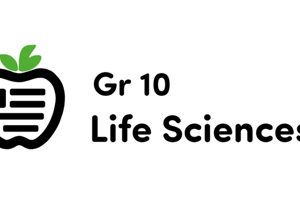Podcast
Questions and Answers
What is the structure of steroids?
What is the structure of steroids?
- Hexagonal structure
- 4 fused rings (correct)
- Single ring
- Linear chains
Which type of lipid is cholesterol?
Which type of lipid is cholesterol?
- Fatty acid
- Triglyceride
- Steroid (correct)
- Phospholipid
What are lipoprotein particles composed of?
What are lipoprotein particles composed of?
- Amino acids and enzymes
- Triglycerides, cholesterol, phospholipids, and apolipoproteins (correct)
- Sugars and proteins
- Fats and nucleic acids
Which lipoprotein serves as the carrier for cholesterol?
Which lipoprotein serves as the carrier for cholesterol?
What is the precursor to many steroid hormones?
What is the precursor to many steroid hormones?
What roles do lipids play in the human body?
What roles do lipids play in the human body?
Which of the following organic compounds is essential for the development and function of the brain and nervous tissue?
Which of the following organic compounds is essential for the development and function of the brain and nervous tissue?
What type of end do fatty acids have in their hydrocarbon chains?
What type of end do fatty acids have in their hydrocarbon chains?
Which lipid class serves as a significant energy source and is found in both animal and vegetable sources?
Which lipid class serves as a significant energy source and is found in both animal and vegetable sources?
What is a defining feature of saturated fatty acids?
What is a defining feature of saturated fatty acids?
Which lipid class provides protection for plants by covering their leaves?
Which lipid class provides protection for plants by covering their leaves?
Which lipid class contains glycerol, fatty acids, phosphate, and a nitrogenous component, serving as a structural component of cell membranes?
Which lipid class contains glycerol, fatty acids, phosphate, and a nitrogenous component, serving as a structural component of cell membranes?
Flashcards are hidden until you start studying
Study Notes
Lipids
Introduction
Lipids are a diverse group of organic compounds that are essential for the proper functioning of the human body. They contribute to various vital processes, including energy storage, cell structure, and the absorption of fat-soluble vitamins. Lipids are generally insoluble in water but soluble in organic solvents such as ether and chloroform. They play a crucial role in maintaining the integrity of cell membranes and play a significant role in the development and function of the brain and nervous tissue.
Lipid Classes
The main classes of lipids are:
- Fats and oils (triglycerides): These are esters of glycerol and three fatty acids. They serve as an important energy source and can be found in various animal and vegetable sources.
- Fatty acids: These are hydrocarbon chains with a carboxyl group at one end. They can be classified as saturated (no double bonds) or unsaturated (one or more double bonds).
- Phospholipids: These contain glycerol, fatty acids, phosphate, and a nitrogenous component. They are essential structural components of cell membranes and are also found in lipoproteins.
- Cholesterol: This is a high-molecular-weight alcohol with a cyclic nucleus. It is essential for the development of the brain and nervous tissue and plays a role in the formation of steroid hormones.
- Waxes: These are esters of long-chain alcohols and fatty acids. They provide protection, particularly in plants, where they cover the leaves.
- Steroids: These have a structure of 4 fused rings. One important type of steroid is cholesterol, which is a part of cell membranes and the precursor to many steroid hormones.
Lipid Transport
Lipids are transported in the polar plasma with the help of lipoprotein particles. These particles consist of triglycerides, cholesterol, phospholipids, and apolipoproteins, which serve as carrier proteins and cofactors for enzymes that metabolize lipoproteins. Examples of lipoproteins include chylomicrons, very-low-density lipoproteins (VLDL), intermediate-density lipoproteins (IDL), low-density lipoproteins (LDL), and high-density lipoproteins (HDL). Each lipoprotein plays a different role in lipid transport.
Conclusion
Lipids are vital to the health and functioning of the human body. They serve as energy sources, structural components of cell membranes, and are necessary for the absorption of fat-soluble vitamins. Understanding the various classes of lipids and their roles in the body is crucial for maintaining optimal health.
Studying That Suits You
Use AI to generate personalized quizzes and flashcards to suit your learning preferences.




